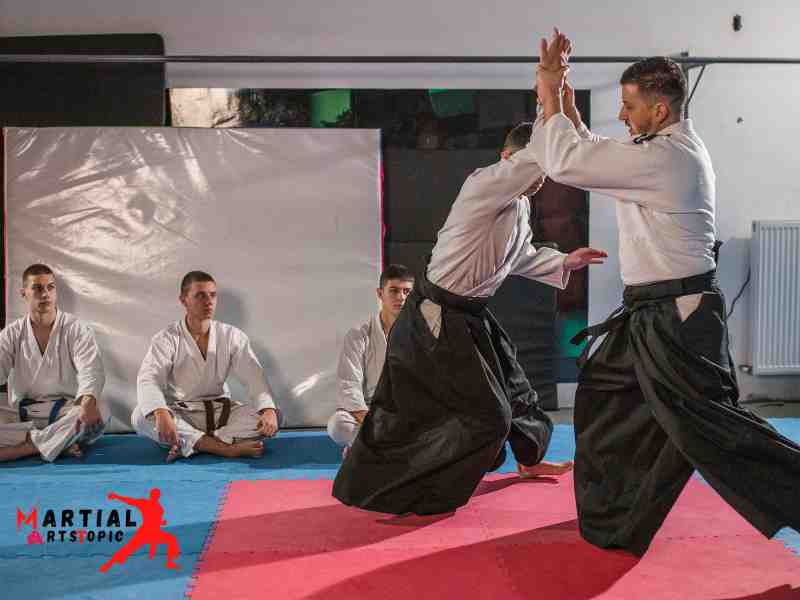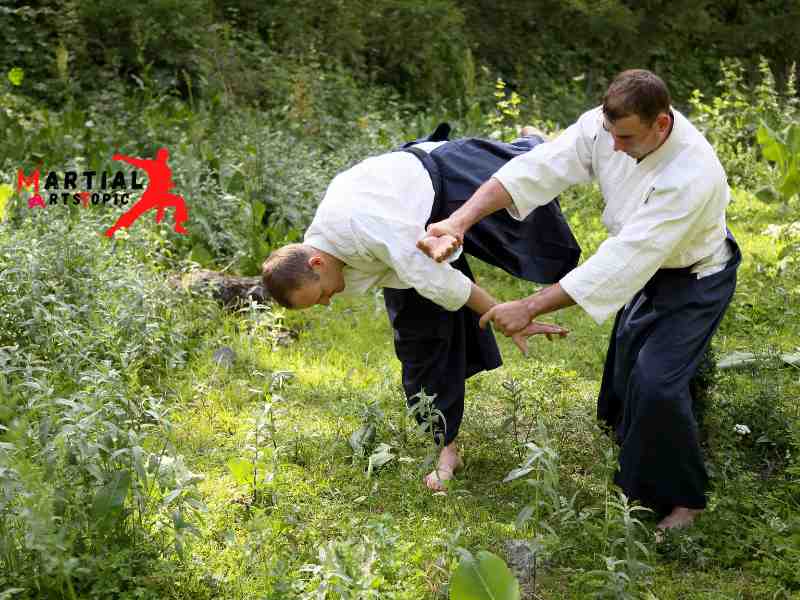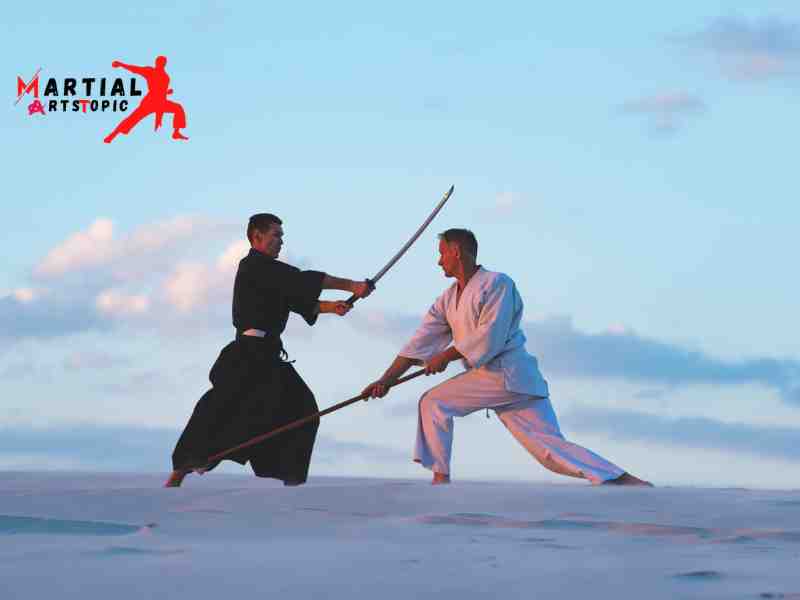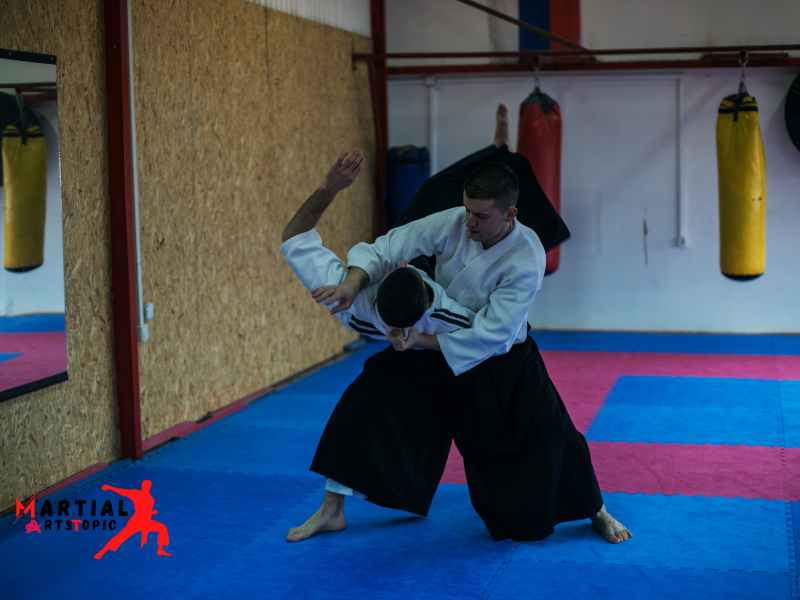
Aikido is Useless? Debunking Common Misconceptions
Aikido is Useless? Debunking Common Misconceptions Aikido, a traditional Japanese martial art, often faces criticism and skepticism from those who question its practicality and effectiveness. Some even go as far as labeling Aikido as useless. However, it is important to separate fact from fiction and debunk the common misconceptions surrounding this unique martial art.
Aikido is useless? The short answer is no. Aikido may not be as widely known or popular as other martial arts like Brazilian Jiu-Jitsu or Muay Thai, but it certainly has its own merits and benefits. Let’s explore some of the common misconceptions and shed light on the truth behind them.
Misconception: Aikido is too gentle and lacks practicality
One of the primary criticisms of Aikido is that it is too gentle and lacks effectiveness in real-life situations. Aikido emphasizes blending with an attacker’s energy instead of using brute force. However, this does not mean it is ineffective. Aikido techniques focus on redirecting and neutralizing an opponent’s energy, making it highly effective in self-defense situations without causing unnecessary harm.
Misconception: Aikido does not work against skilled fighters
Another misconception is that Aikido techniques do not work against skilled fighters. While it is true, that Aikido may not rely on direct strikes or aggressive movements commonly seen in other martial arts, it offers a unique approach to dealing with attacks. Aikido techniques leverage an opponent’s momentum and energy, making it possible to control and neutralize even the most skilled fighters.
Misconception: Aikido lacks practical application in real-life scenarios
Critics often argue that Aikido techniques are too stylized and lack practical application in real-life scenarios. However, Aikido’s principles and techniques are based on the principles of harmony and non-resistance, which can apply to various situations beyond physical altercations. Aikido teaches practitioners to remain calm, centered, and focused, enabling them to deal with conflict and challenging situations both on and off the mat.
Misconception: Aikido is too complex and takes years to master
Some argue that Aikido is overly complex and takes years of training to master. While Aikido, like any martial art, requires dedication and practice to become proficient, practitioners of all levels can learn and apply its techniques, including beginners. Aikido’s emphasis on principles and concepts allows practitioners to adapt and apply its teachings to their own unique circumstances.
Historical background of Aikido
The Historical Background of Aikido: Debunking the Myth, that Aikido is Useless Aikido, a martial art that originated in Japan, has gained popularity worldwide for its unique philosophy and effective self-defense techniques. However, there are some misconceptions surrounding its practicality and usefulness in real-life situations. In this article, we will delve into the historical background of Aikido and debunk the myth that Aikido is useless.
Morihei Ueshiba found aikido, also known as O-Sensei, in the early 20th century. O-Sensei was a skilled martial artist who studied various traditional Japanese fighting styles, including Daito-ryu Aiki-jujutsu. Influenced by his spiritual beliefs and a desire for a more peaceful approach to combat, O-Sensei developed Aikido as a martial art that emphasized harmony and non-aggression.
One of the key principles of Aikido is the concept of blending with an attacker’s energy and redirecting it, rather than meeting force with force. Aikido techniques involve joint locks, throws, and immobilizations that utilize an attacker’s momentum and aggression against them. This unique approach allows practitioners to neutralize an opponent’s attack without causing excessive harm.
Critics of Aikido often argue that its techniques are too stylized and unrealistic for practical self-defense scenarios. They claim that Aikido lacks the effectiveness and efficiency of other martial arts like Brazilian Jiu-Jitsu or Muay Thai. However, such criticisms fail to consider the broader goals and philosophy of Aikido.
Aikido is not solely focused on winning fights or dominating opponents. It places equal importance on personal growth, self-discipline, and spiritual development. By practicing Aikido, individuals learn to cultivate a calm mind, improve their physical coordination, and develop a deep understanding of the principles of harmony and balance.
Aikido’s emphasis on blending and redirecting an opponent’s energy can be highly effective in real-life situations. Rather than engaging in a prolonged physical confrontation, they trained Aikido practitioners to de-escalate conflicts and neutralize aggression swiftly and efficiently. I can adapt aikido techniques to various scenarios, including street altercations or self-defense against armed attackers.
While Aikido may not rely on brute strength or aggressive techniques, it offers valuable self-defense skills that practitioners of all ages and physical abilities can utilize. Aikido’s nonviolent philosophy and focus on blending with an opponent’s energy make it an ideal martial art for those seeking a more peaceful approach to self-defense.
Brief explanation of Aikido as a martial art

Aikido, a traditional Japanese martial art, has long been a subject of fascination and debate within the martial arts community. Often misunderstood and subjected to unfair criticism, we often label Aikido as useless in modern combat scenarios. However, such assumptions cannot acknowledge the true essence and philosophy behind this dynamic martial art. In this blog post, we aim to shed light on the misconceptions surrounding Aikido and explore its unique attributes that make it a valuable discipline in today’s world.
Understanding Aikido
Morihei Ueshiba developed aikido, which means “the way of harmonious spirit in the early 20th century. Unlike many other martial arts that focus on aggression and overpowering opponents, Aikido emphasizes blending and redirecting the energy of an attacker, using their own force against them. We root it in the principles of harmony, non-resistance, and self-improvement.
Dispelling the Myth of Uselessness
One of the most common criticisms leveled against Aikido is its perceived lack of practicality in real-life combat situations. Detractors argue the techniques taught in Aikido do not hold up against a determined and skilled opponent. However, this criticism cannot consider the broader objectives and benefits of practicing Aikido.
Aikido as Self-Defense
While we may not explicitly design Aikido for one-on-one combat scenarios, it offers a range of effective self-defense techniques that can be applied in real-life situations. Aikido’s focus on redirecting and neutralizing an attacker’s energy, rather than seeking to inflict harm, can be beneficial in diffusing potentially dangerous encounters without escalating violence.
Physical and Mental Discipline
Beyond self-defense applications, Aikido cultivates physical and mental discipline. Regular practice of Aikido enhances flexibility, coordination, and overall physical fitness. The emphasis on mindfulness, self-awareness, and the cultivation of a calm and focused mind contributes to personal growth and self-improvement, both on and off the mat.
Transferable Skills
Aikido offers a range of skills and principles that can be applied outside of the dojo. The practice of Aikido instills qualities such as adaptability, resilience, and the ability to remain calm under pressure. These transferable skills can have a positive impact on various aspects of life, including conflict resolution, stress management, and personal relationships.
Aikido in a Contemporary Context
Critics often argue that Aikido is ineffective against modern combat techniques or in scenarios involving multiple attackers. However, it is important to remember that Aikido is not solely focused on combat effectiveness. Its emphasis on harmony and non-violence makes it a valuable martial art in today’s society, where conflict resolution, empathy, and understanding are increasingly crucial.
Aikido as a Martial Art
Aikido is Useless? Debunking the Myths of this Martial Art If you’ve ever heard of Aikido, you may have come across claims that it is a useless martial art. But is this really true? In this blog post, we will debunk the myths surrounding Aikido and shed light on why it is a valuable and effective martial art.
Aikido is a Japanese martial art developed by Morihei Ueshiba in the early 20th century. It focuses on using an opponent’s energy and movements against them, rather than relying on brute strength or aggression. This unique approach sets Aikido apart from more aggressive martial arts, like Karate or Muay Thai.
One common misconception about Aikido is that it is not practical for real-life self-defense situations. Critics argue its techniques are too complex, and its emphasis on blending and redirecting attacks makes it ineffective in a real fight. However, this belief cannot understand the essence of Aikido.
In Aikido, practitioners learn to control and neutralize an opponent’s energy, rather than engaging in a direct confrontation. By blending with the attacker’s movements, Aikido practitioners can redirect their energy and disable them without causing harm. This makes it particularly useful in situations where de-escalation and restraint are essential, such as in law enforcement or security professions.
Another misconception is that Aikido lacks practical striking techniques. While Aikido primarily focuses on joint locks, throws, and immobilization techniques, it also includes strikes and strikes that can be used effectively. A well-rounded Aikido training program involves the development of striking skills, ensuring I equipped practitioners with a variety of tools for self-defense.
Aikido is not just about physical techniques. It also emphasizes mental and spiritual development. Through regular training, practitioners cultivate discipline, focus, and a heightened awareness of their surroundings. We can apply this mental aspect of Aikido to various aspects of life, enhancing personal growth and self-awareness.
Critics may argue that Aikido practitioners often perform choreographed techniques in a controlled environment, which may not reflect real-life situations. While Aikido training often involves cooperative practice, this is not unique to Aikido. Many martial arts, including judo or Brazilian jiu-jitsu, also use controlled drills to develop skills and techniques.
Aiki Brazilian Jiu-Jitsudo’s cooperative training methods serve a purpose. They allow practitioners to understand the principles and concepts behind each technique, ensuring a solid foundation before moving on to more dynamic and realistic scenarios. This progressive training approach is crucial for mastering any martial art effectively.
Explanation of Aikido techniques and training methods

Aikido Techniques and Training Methods: Unlocking the Power Within Is Aikido Useless? Debunking the Myths and Unveiling the Truth.
With martial arts, Aikido often finds itself at the center of a heated debate. Critics argue that Aikido techniques are useless in real-life situations, questioning its effectiveness as a self-defense system. In this article, we aim to dispel these misconceptions and shed light on the true essence of Aikido, its techniques, and training methods.
Aikido, a Japanese martial art developed by Morihei Ueshiba in the early 20th century, is often referred to as the “art of peace.” Unlike other martial arts that focus on aggression and overpowering opponents, Aikido emphasizes harmony and blending with an attacker’s energy. It aims to neutralize aggression without causing harm, making it a unique and powerful self-defense system.
Now, let’s delve into some of the essential Aikido techniques and training methods that make this martial art truly remarkable.
Tai Sabaki: The Art of Body Movement
Tai Sabaki, a fundamental aspect of Aikido, involves the art of body movement. It teaches practitioners how to efficiently evade and redirect an opponent’s attack. By mastering Tai Sabaki, Aikido practitioners can effortlessly maintain their balance, control their center of gravity, and create opportunities to counter-attack. This technique enables them to neutralize even the most aggressive assaults.
Ukemi: The Art of Falling Safely
In Aikido, falling safely, known as Ukemi, is as important as executing techniques. Practitioners learn to fall and roll gracefully, minimizing the risk of injury during training. Ukemi not only protects the practitioner but also allows for a seamless transition from a defensive position to an offensive one. By mastering Ukemi, Aikido practitioners can swiftly regain control and remain in a advantageous position.
Joint Locks and Throws: Redirecting Energy
Aikido techniques often involve joint locks and throws to immobilize an opponent. By redirecting an attacker’s energy and utilizing their own force against them, Aikido practitioners can neutralize aggression efficiently. Joint locks can control an opponent’s movements by manipulating their joints, while throws leverage an attacker’s momentum to unbalance them. These techniques showcase the power of Aikido’s principle of blending and redirecting energy.
Kokyu Nage: The Power of Breath
Kokyu Nage, or “breath throw,” is a technique unique to Aikido. By mastering the art of breath control, practitioners learn to harness the power of their breath to enhance their techniques. Proper breathing not only improves the execution of techniques but also allows for a deeper connection between mind and body. Kokyu Nage teaches Aikido practitioners to cultivate inner strength and calmness, enabling them to respond effectively in any situation.
Training in Aikido involves continuous practice and dedication. We refine techniques through repetitive training with partners, gradually enhancing muscle memory and reflexes. Aikido practitioners engage in a non-competitive environment, focusing on cooperation rather than competition. This approach fosters a sense of community and mutual growth among practitioners.
So, is Aikido useless? Absolutely not. While it may not rely on brute force or aggressive tactics, Aikido offers a holistic approach to self-defense and personal development. Its techniques and training methods enable practitioners to neutralize aggression effectively, while also cultivating inner strength, discipline, and harmony.
Whether you are seeking to improve your self-defense skills, enhance your physical fitness, or develop a deeper connection between mind and body, Aikido has much to offer. Embrace the beauty of this martial art, and unlock the power within you through Aikido’s techniques and training methods.
Benefits of Aikido
Benefits of Aikido: Dispelling the Myth of Uselessness Is Aikido useless? Many have debated this question, but the truth is, Aikido is far from useless. In fact, this martial art offers a plethora of benefits that can positively affect various aspects of your life. In this blog post, we will explore some of the incredible benefits of practicing Aikido and debunk the misconception surrounding its effectiveness.
- Self-defense mastery: Aikido is a highly effective self-defense system that focuses on redirecting an attacker’s energy rather than using brute force to overpower them. By learning Aikido techniques, you can develop the skills to protect yourself in real-life situations. The art’s emphasis on blending with an opponent’s movements allows you to neutralize attacks without causing harm, making it a great option for those who seek non-violent methods of self-defense.
- Physical fitness: Engaging in regular Aikido practice can significantly improve your physical fitness. Aikido techniques require a combination of flexibility, strength, and balance. The repetitive movements and training exercises involved in Aikido training help improve cardiovascular endurance, muscular strength, and overall body coordination. Additionally, Aikido’s flowing nature promotes fluidity of movement, leading to enhanced agility and grace.
- Mental and emotional well-being: Aikido is not merely a physical practice; it is also a deeply philosophical and spiritual one. The art teaches practitioners to cultivate a calm and focused mind, helping them stay present in the moment. Through consistent training, Aikido practitioners develop mental resilience, self-discipline, and the ability to remain calm under pressure. The principles of Aikido, such as harmony and non-resistance, can also be applied to daily life, fostering better relationships and reducing stress levels.
- Improved body awareness: Aikido training requires practitioners to be fully aware of their body and the movements of their training partners. This heightened body awareness carries over into daily life, improving posture, coordination, and spatial awareness. By practicing Aikido, you become more attuned to your body’s signals and learn to move with greater efficiency and precision.
- Increased confidence and self-esteem: As you progress in your Aikido journey, you will witness your skills improving and your confidence growing. Aikido training challenges individuals to step out of their comfort zones, face their fears, and overcome obstacles. This process builds resilience and fosters a sense of accomplishment, leading to increased self-esteem and self-confidence that spills over into all areas of life.
- Stress relief: Aikido provides an excellent outlet for stress relief. The physical and mental engagement required in training helps to release tension and promote relaxation. Through the practice of Aikido, individuals can find a healthy way to channel and manage their stress, resulting in improved overall well-being. Physical benefits Is Aikido Useless? Debunking Common Misconceptions and Highlighting its Physical Benefits When it comes to martial arts, Aikido often finds itself in the middle of a debate. Some people claim that Aikido is useless and lacks practicality in real-world self-defense situations. However, these claims are often based on misconceptions and a lack of understanding of the art’s true nature and physical benefits.
In this blog post, we aim to debunk the myth that Aikido is useless by shedding light on the practical aspects of this traditional Japanese martial art. We will also explore the various physical benefits that practitioners can gain from training in Aikido.
Understanding Aikido’s Purpose
Aikido is a martial art that focuses on redirecting an opponent’s energy and using their own movements against them. Unlike other martial arts that rely on forceful strikes and aggression, Aikido emphasizes blending with the attacker’s movements and neutralizing their attacks through joint locks, throws, and immobilization techniques.
While Aikido may not have the same aggressive approach as other martial arts, it does not make it useless. Instead, Aikido offers a unique perspective on self-defense, emphasizing non-violence, discipline, and harmony.
Physical Benefits of Aikido

Improved Balance and coordination: Aikido training involves precise footwork, body positioning, and fluid movements. Practitioners learn how to maintain balance while executing techniques, leading to improved overall coordination and stability.
Increased Flexibility: Aikido techniques require practitioners to move their bodies in various directions, often involving stretching and extending their limbs. Regular practice can lead to increased flexibility and range of motion.
Strength and Endurance: Aikido techniques involve utilizing the body’s core muscles, as well as upper and lower body strength. Consistent training can improve muscle tone, strength, and overall endurance.
Enhanced Reflexes: Aikido training involves reacting quickly to an opponent’s movements. This constant practice of responding to attacks helps develop enhanced reflexes and reaction times.
Lack of Real-World Application: While Aikido techniques may appear stylized and choreographed in demonstrations, they are based on practical principles of redirecting energy and immobilizing attackers. Aikido techniques can be highly effective in real-world self-defense situations when properly applied.
Non-Competitive Nature: they often criticize Aikido for its non-competitive nature, as it does not involve sparring or tournaments. However, the absence of competition allows practitioners to focus on personal growth, self-improvement, and the development of a harmonious mindset.
Limited Range of Techniques: Aikido techniques may seem repetitive to the untrained eye, but they offer a broad range of applications and variations. We can adapt each technique to different situations, making Aikido versatile and effective.
Mental and emotional benefits
Is Aikido Useless? The Mental and Emotional Benefits When it comes to martial arts, there are countless disciplines to choose from. Each one has its unique characteristics, techniques, and philosophies. One martial art that often sparks debates and discussions is Aikido. Some people believe that Aikido is useless in real-life situations, while others argue that its mental and emotional benefits outweigh practicality concerns. In this article, we will delve into the mental and emotional benefits of practicing Aikido, shedding light on why it is far from useless.
Stress Relief and Emotional Balance
Life can be stressful, and finding ways to manage and reduce stress is crucial for our overall well-being. Aikido provides an effective outlet for stress relief and emotional balance. Through its flowing movements and focus on harmony, Aikido practitioners develop the ability to stay calm and centered even in challenging situations. This practice allows individuals to let go of negative emotions and cultivate a sense of inner peace.
Increased Self-Confidence
Aikido is not about overpowering opponents; rather, it emphasizes redirecting and neutralizing attacks. As practitioners gain proficiency in the art, their self-confidence naturally grows. Aikido teaches individuals to trust their instincts, make quick decisions, and adapt to unpredictable situations. This newfound confidence extends beyond the dojo, empowering practitioners to face challenges with a positive mindset in their everyday lives.
Improved Mental Focus and Concentration
In a world filled with distractions, cultivating mental focus and concentration is becoming increasingly important. Aikido training demands attention to detail, requiring practitioners to be fully present at the moment. By honing their focus during practice, Aikido students develop mental clarity and the ability to concentrate on tasks at hand. These skills can be applied to various aspects of life, such as work, studies, and personal relationships.
Enhanced Resilience and Conflict Resolution
Aikido is based on the principle of blending with an attacker’s energy and redirecting it. This philosophy promotes non-violent conflict resolution and teaches individuals to respond to aggression with harmony. Through consistent practice, Aikido practitioners learn to approach conflicts with a calm and composed mindset, seeking resolution rather than escalating tensions. This valuable skill translates into improved relationships and the ability to navigate challenging situations both on and off the mat.
Cultivation of Mind-Body Connection:
Aikido emphasizes the importance of the mind-body connection, encouraging practitioners to synchronize their movements with their thoughts. The practice involves fluid motions, flowing footwork, and precise techniques, all of which require coordination between the mind and body. By developing this connection, Aikido practitioners become more in tune with their bodies, allowing for increased body awareness, balance, and overall physical well-being.
Is Aikido Really Useless in Self-Defense?
When it comes to self-defense systems, Aikido often sparks debates and discussions. Some claim that Aikido is ineffective and impractical in real-life combat situations, while others argue that it is a comprehensive martial art that can be used effectively for self-defense. The topic and explore whether Aikido is truly useless in self-defense scenarios or if it has more to offer than meets the eye.
Understanding Aikido
Aikido is a Japanese martial art developed by Morihei Ueshiba in the early 20th century. It focuses on harmonizing with an opponent’s energy and redirecting it rather than relying on brute force. Aikido techniques involve joint locks, throws, and immobilizations, making it distinct from more aggressive martial arts, like boxing or karate.
Debunking the Myth
Critics often argue that Aikido is not effective in real-world self-defense situations because it lacks practicality and does not train practitioners to deal with realistic attacks or multiple assailants. However, this argument overlooks the true essence of Aikido. While Aikido may not emphasize direct strikes or aggressive counterattacks, it provides practitioners with a unique set of skills that can be highly effective when properly applied.
Principles of Aikido
Aikido is based on the principles of blending with an attacker’s energy, redirecting their force, and utilizing their momentum against them. By understanding an opponent’s movements and intentions, Aikido practitioners can neutralize attacks efficiently. This principle allows Aikido to be adaptable to various situations and different types of aggressors.
Effective Joint Locks and Throws
Aikido techniques focus on using an attacker’s energy against them, often resulting in joint locks or throws that immobilize or incapacitate the opponent. These techniques can be highly effective, even against larger or stronger adversaries. By redirecting an opponent’s force and balance, Aikido practitioners can effectively neutralize threats without relying on physical strength alone.
Non-Aggressive Self-Defense
Aikido’s non-aggressive nature does not imply weakness. It emphasizes maintaining composure and controlling the situation without resorting to unnecessary violence. Aikido teaches practitioners to remain calm and centered even in high-stress situations, allowing them to assess and respond appropriately.
